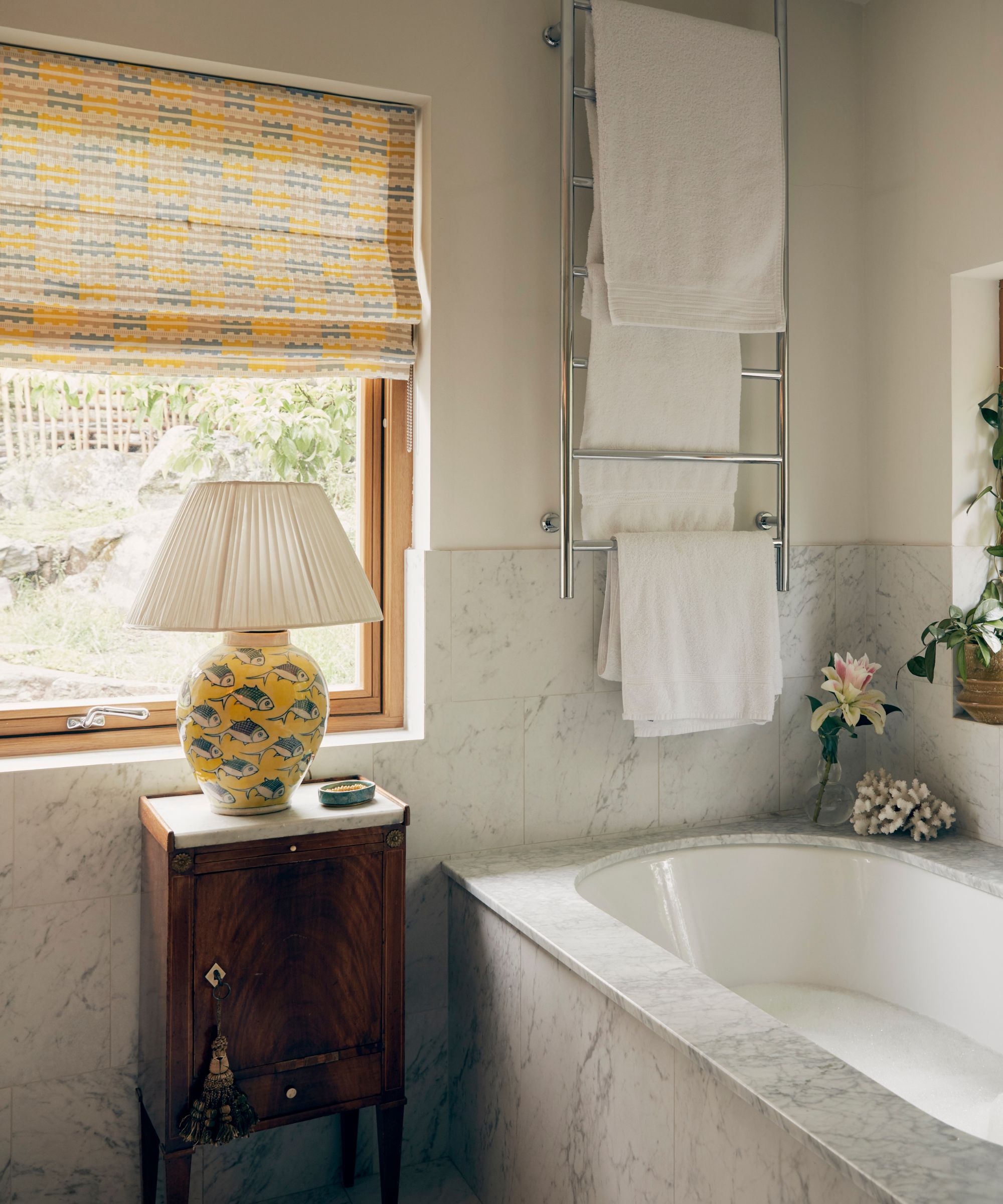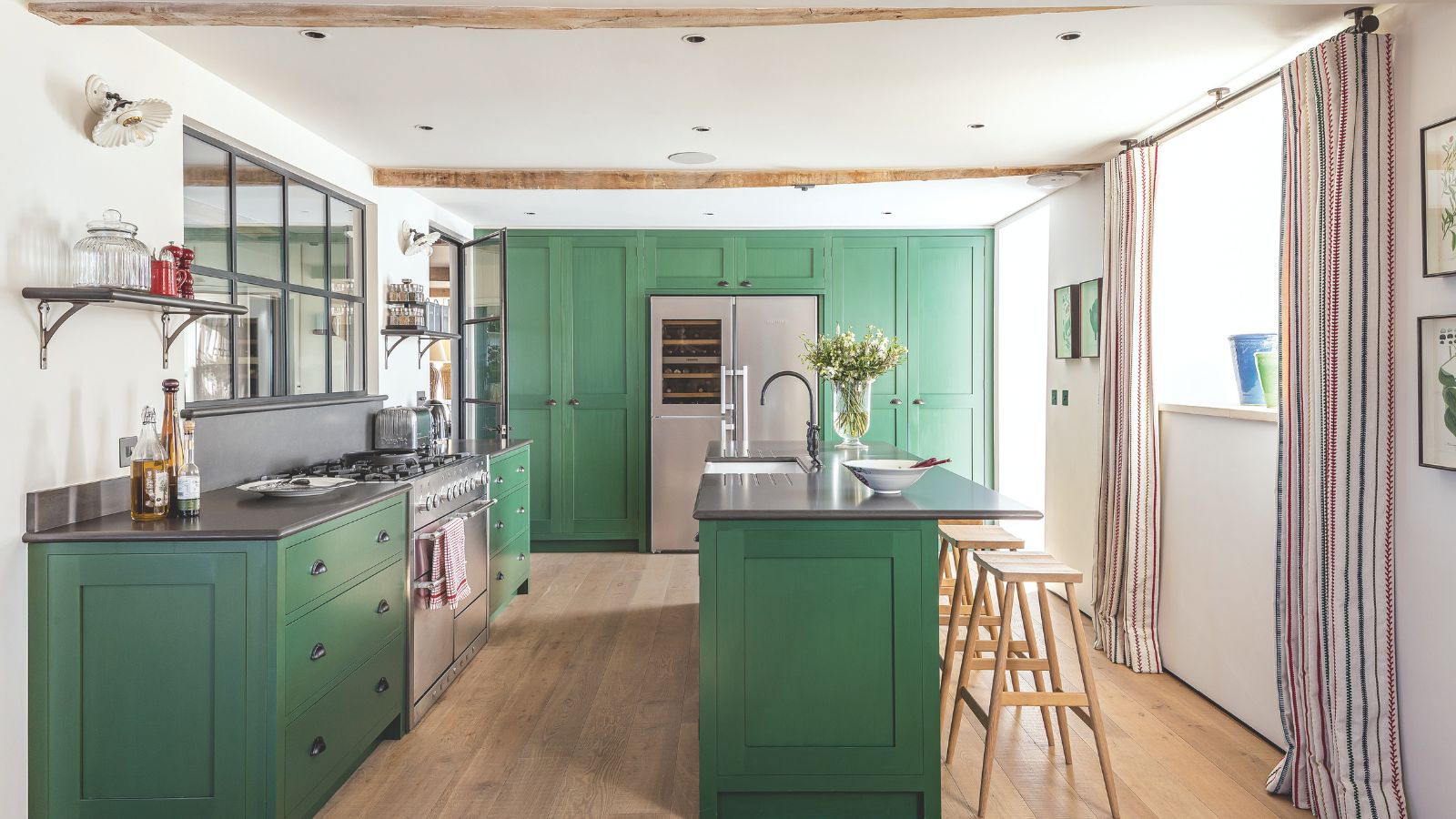Are you flushing your water heater? Failure to do so leaves your home at risk of contamination, poor flow and even damage, experts warn
It could save you money in the long run


It’s easy enough to forget about your water heater. So long as hot water runs from the tap, what is there to worry about?
Master plumbers however are warning that serious sediment build-up could be damaging your water heater, driving up bills, and possibly contaminating your water if left unchecked. The solution? Flushing your water heater at least yearly, they say.
Here’s how the experts perform this essential water heater maintenance to help cut back on bills.
How to flush a water heater
Flushing a water heater is essential to make your water heater more efficient.
Max Veggeberg, CEO at Tetra explains, ‘Draining a water heater removes the accumulated sediment and mineral deposits from the tank that make your heating system work harder. By flushing this debris out, the heater operates more efficiently, as heat transfers more effectively to the water. It also helps prevent overheating, which can damage the tank or heating elements.’
To flush a water heater, you will need:
- A garden hose, available at Walmart
- A flathead screwdriver, also available at Walmart
- Rubber work gloves, from Amazon, to protect your skin
- Optional: A large bucket, from at Walmart to catch water

Like draining your home’s plumbing system, Matt Kunz, president at Mr. Rooter Plumbing, a Neighborly company says, Ideally, ‘Plumbing work should only be performed by trained service professionals.’
However, if you must drain the water and flush the heater yourself, he suggests letting the water heater cool down completely before following these seven steps:
- For electric water heaters, they should be turned off at the breaker. For gas models, set the thermostat to “pilot.”
- Turn off the cold water inlet valve. A hose will need to be connected to the drain valve at the bottom of the tank [this is usually silver or brass colored, or plastic with a threaded end]. The other end of the hose should be in a safe drainage area [such as a large bucket, or floor drain].
- Open a hot water faucet in the home to relieve pressure in the system. Then, open the drain valve with the flat head screwdriver and allow the water to flow out completely.
- To flush the water tank, turn the cold water supply on briefly to flush out the remaining sediment.
- Shut off the drain valves and disconnect the hose.
- To refill the tank, turn the cold water inlet valve back on. Be sure to close the open faucet when the water flows smoothly.
- Restore power to the unit.
How often to flush a water heater

Flushing your water heater can be a bit of a complicated task, so how often should you do it?
Aaron Adams, master plumber and CEO of Aaron Services: Plumbing, Heating, Cooling says there is no ‘one-size-fits-all' answer.
He explains, ‘The quality of your water affects how frequently you should flush it. We generally recommend a flush once a year. If you have particularly low levels of minerals, or you have a whole home water filtration system, you could get away with flushing every two years.
‘The older the water heater is, or the longer it has been since its last flush, the higher the risk of problems developing. Some customers are okay with this risk, understanding that the flush may lead to needing to replace the water heater altogether, while others prefer not to fix what isn’t broken.’
Neglecting it for too long, however, is a common water heating mistake driving up energy bills.
Max Veggeberg says flushing a water heater is a good way to rectify some common water heater problems explaining that, ‘Regular draining reduces the risk of costly repairs, extends the heater’s lifespan, and ensures you consistently have a reliable supply of hot water.’
FAQs
Why is my water heater not draining?
Aaron Adams, master plumber, explains, ‘If too much sediment has built up in the bottom of the water heater, it may not drain out during a flush. Sediment can also clog the drain, preventing a proper water heater flush. The ultimate way to prevent sediment buildup is to install a whole home water filtration system before the water heater, ideally when you have a new water heater installed.
‘When water enters the home, it has minerals in it that build up in the bottom of the water heater. This sediment can also clog fixtures, causing flow problems in faucets and appliances that can eventually require fixture replacement. Over time, sediment also acts as insulation between the burner and the water, making the water heater work harder and take longer to heat water, and decreasing the amount of hot water supplied at one time.’
How can I tell if my water heater needs flushing?
The most common signs that your water heater needs flushing are a lack of hot water, or popping and rumbling noises from your heater. You might also notice that your tap water is cloudy, or smells bad, and it can take a very long time to heat up.
If you are not sure, it is best to call a professional and have your water heater serviced.
While the task can be done yourself, it is still advisable to consult a professional to extend how long a water heater lasts. Aaron Adams adds, ‘If a plumber performs a water heater flush, they’ll generally use the opportunity to inspect other aspects of the water heater, possibly replacing the anode rod and confirming the pressure on your plumbing system is within a safe zone.’
Sign up to the Homes & Gardens newsletter
Design expertise in your inbox – from inspiring decorating ideas and beautiful celebrity homes to practical gardening advice and shopping round-ups.

Chiana has been at Homes & Gardens for two years and is our resident 'queen' of non-toxic living. She spends most of her time producing content for the Solved section of the website, helping readers get the most out of their homes through clever decluttering, cleaning, and tidying tips. She was named one of Fixr's top home improvement journalists in 2024.
You must confirm your public display name before commenting
Please logout and then login again, you will then be prompted to enter your display name.
-
 Pamela Anderson's kitchen seating arrangement is one of the most intelligent I've seen – it turns an awkward corner into a chic social space
Pamela Anderson's kitchen seating arrangement is one of the most intelligent I've seen – it turns an awkward corner into a chic social spaceThe model's banquette seating perfects a smart seating trend that's shaping how we dine and socialize in 2025 – and it will fit in the smallest of kitchens
-
 8 of the biggest small bedroom layout mistakes designers see time and time again
8 of the biggest small bedroom layout mistakes designers see time and time againThese small bedroom layout mistakes are so easy to make, but so easy to avoid too
-
 'They are not designed to be storage' – experts warn you should never store these 5 things on your washer or dryer
'They are not designed to be storage' – experts warn you should never store these 5 things on your washer or dryerYou'll run the risk of fire or damage to your appliance
-
 This $5 hack can cut your water bill in half and vastly improve your water pressure – it's perfect for renters and homeowners alike
This $5 hack can cut your water bill in half and vastly improve your water pressure – it's perfect for renters and homeowners alikeA faucet aerator can improve flow, reduce water, and help with washing up
-
 What are gutter guards, and do they really work? Roofing experts reveal these mean 'less to worry about', including mold and pests
What are gutter guards, and do they really work? Roofing experts reveal these mean 'less to worry about', including mold and pestsThey also help prevent water-related damage
-
 5 surprisingly practical ways to re-purpose old bed sheets for cleaning, decluttering and storage at home
5 surprisingly practical ways to re-purpose old bed sheets for cleaning, decluttering and storage at homeDon't ditch worn-out bedding – there's life in them yet
-
 Do you need to turn the lights off when you leave a room? Experts have ended this time-honored debate once and for all
Do you need to turn the lights off when you leave a room? Experts have ended this time-honored debate once and for allOn or off? We delve into the details of this age-old dispute
-
 I tried the baking soda trick to quickly and naturally clean my outdoor rug – it’s now set for Easter outdoor hosting
I tried the baking soda trick to quickly and naturally clean my outdoor rug – it’s now set for Easter outdoor hostingBaking soda is perfect for lifting dirt and debris
-
 The 5 worst things you can do to your fridge – these will drive up energy costs and result in pricey and regrettable repairs
The 5 worst things you can do to your fridge – these will drive up energy costs and result in pricey and regrettable repairsIt's crucial to swerve these blunders, appliance experts warn
-
 Extend the lifespan of your appliance with 5 simple but crucial washing machine maintenance tips
Extend the lifespan of your appliance with 5 simple but crucial washing machine maintenance tipsFrom cleaning the filters to keeping the door open, experts reveal the washer tips they swear by